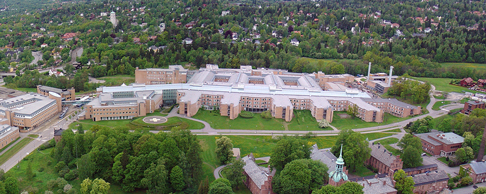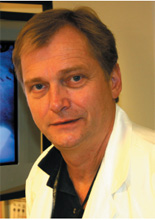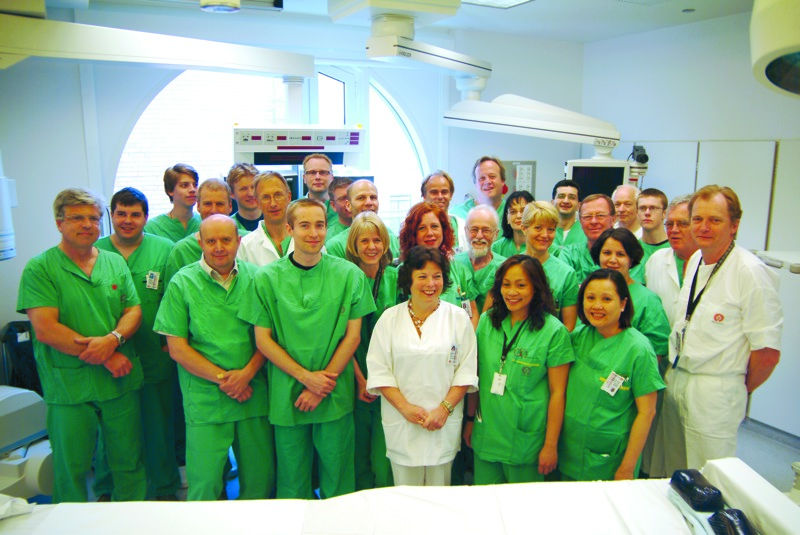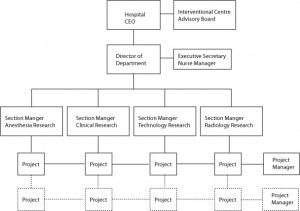The Interventional Centre
November 1, 2008
The Interventional Centre
Rikshospitalet University Hospital
0027 0slo
Norway
Name and Contacts
Erik Fosse, Professor, MD
Head of Department
Direct phone: +47 2307 0116
Switchboard: +47 2307 0100
FAX: +47 2307 01110
Email: erik.fosse@medisin.uio.no
Co-workers
Description of the centre
Main Goals and Objectives
The Interventional Centre is a research and development department for image guided and minimally invasive therapy at Rikshospitalet University Hospital (RH-HF) in Oslo.
The Interventional Centre has the following tasks:
- Development of new procedures
- Development of new treatment strategies
- Compare new and existing strategies
- Study the social, economic, and organisational consequences of new procedures on health care
Strategy
The Interventional Centre shall be a research and development resource for all the clinical and laboratory departments at Rikshospitalet University Hospital.
The Interventional Centre shall actively offer similar services to the healthcare community in Norway outside the hospital.
The Interventional Centre shall work as a link between technology institutions (commercial and academic) and the clinical medical environment in the hospitals.
The Interventional Centre shall promote and work actively to protect new knowledge and facilitate commercial exploitation.
The research is focused in four strategic areas:
- MR guided intervention and surgery
- X-ray, CT, ultrasound, video-guided interventions and surgery
- Robotics and simulators
- Biosensors, data management and communication
Deliveries
The Centre delivers the following:
- New clinical methods
- Research
- Intellectual property/innovation
Organisation
The Interventional Centre is an independent hospital department. The Head of department reports directly to the hospital CEO. A National Advisory board with representatives from all universities and university hospitals in Norway and the main departments at Rikshospitalet monitors and gives advice on research and activity. In 2007 the Interventional Centre had a cross-disciplinary staff of 24 employees. Seven doctors, nurses, radiographers and engineers employed by other departments worked regularly at the Centre while a large number of medical staff from most departments in the hospital worked at a less regular basis at the Centre. There were three university-employed professors (Erik Fosse, Tor Inge Tønnessen and Halfdan Ihlen) at the Faculty of Medicine, University of Oslo, one professor at the Department of Informatics, University of Oslo (Eigil Samset) and one professor from the Department of Electronics and Telecommunication at the Norwegian University of Science and Technology (NTNU) in Trondheim (Ilangko Balasingham). Professor Atle Bjørnerud from the Department of Physics, University of Oslo established his research group at the Centre in 2006. In addition 20 scientists were working at the Centre by external funding.
Matrix organisation
In order to facilitate effective execution of cross-disciplinary projects, the personnel and equipment at the Centre were allocated to four sections in a matrix organisation. Each section is headed by a section manager. Each project has a project manager and the project manager reports to the section manager in charge of the project. The head of department and the section managers constitute the management group where new projects are approved. Both the equipment and the staff are available as a common resource for departments and research groups aiming at developing and quality assess new methods. Scientists/clinical departments outside the Centre were responsible for a substantial number of the projects run in 2007. 40% of the staff had a technological, non-medical background. By the end of 2007 the employees of the Interventional Centre came from 13 different nations all over the world. The Interventional Centre thus represented a unique multi-national environment of medical and technological expertise.
Facilities
The Centre has a unique architectural structure. In the three suites advanced imaging equipment was integrated in an operation room environment. In 2007 all advanced imaging equipment was renewed. In the combined surgical and radiological suite, the conventional angiographic equipment was substituted by the Siemens Zeego system, based on robotic technology and containing new advances in imaging and functionality. Our MRI suite was completely rebuilt into a dual room suite where a 3 T was installed in one room beside a state of the art OR. The two rooms were separated by a sliding door, allowing surgery with standard equipment and intermittent MRI imaging. In the videoscopy room all systems were replaced by Olympus HD equipment.
Link






